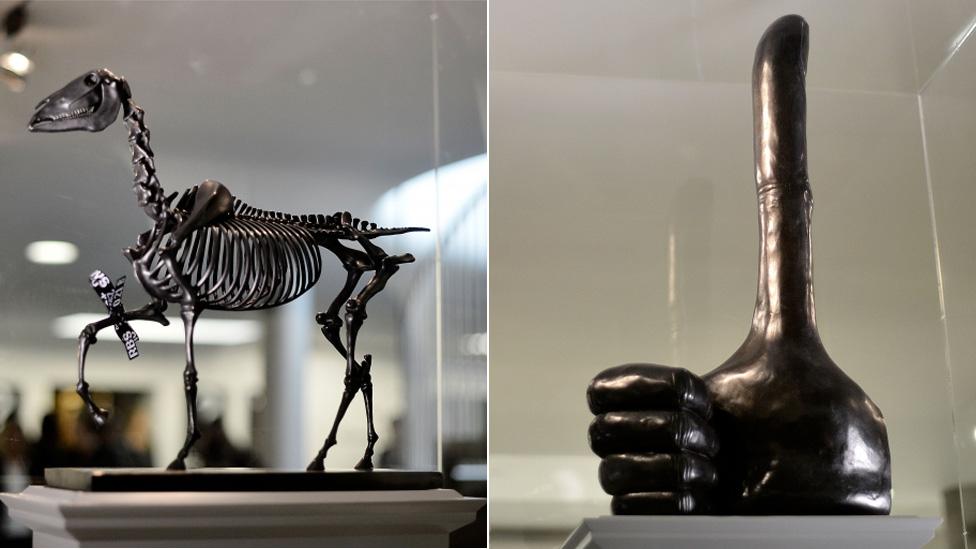Trafalgar Square Fourth Plinth: Shortlist announced
- Published

THE END by Heather Phillipson is the current artwork on display
A giant rocket and casts of the faces of 850 trans people are two of the proposals put forward for Trafalgar Square's Fourth Plinth.
A silo filled with plants, a 1914 photograph reimagined, a figure based on German folklore and a jewellery tree made of household objects are designs that have also been shortlisted.
Sadiq Khan said it was the "most international line-up" of artists.
The landmark has been home to a rolling commission of artworks since 1998.
The plinth was built in 1841 but remained empty due to a lack of funds.
Six works by artists including Malawi-born Samson Kambalu and Germany-based Paloma Varga Weisz have gone on display at the National Gallery, which reopened last week, as well as online.
The current artwork is Heather Phillipson's sculpture, titled THE END, which will be on display until September 2022.
Two designs, which will go on display in 2022 and 2024 respectively, will be chosen by the Fourth Plinth Commissioning Group in late June.
The new proposals are:

GONOGO by Goshka Macuga is a giant rocket which encourages people to look beyond their immediate surroundings and up to outer space
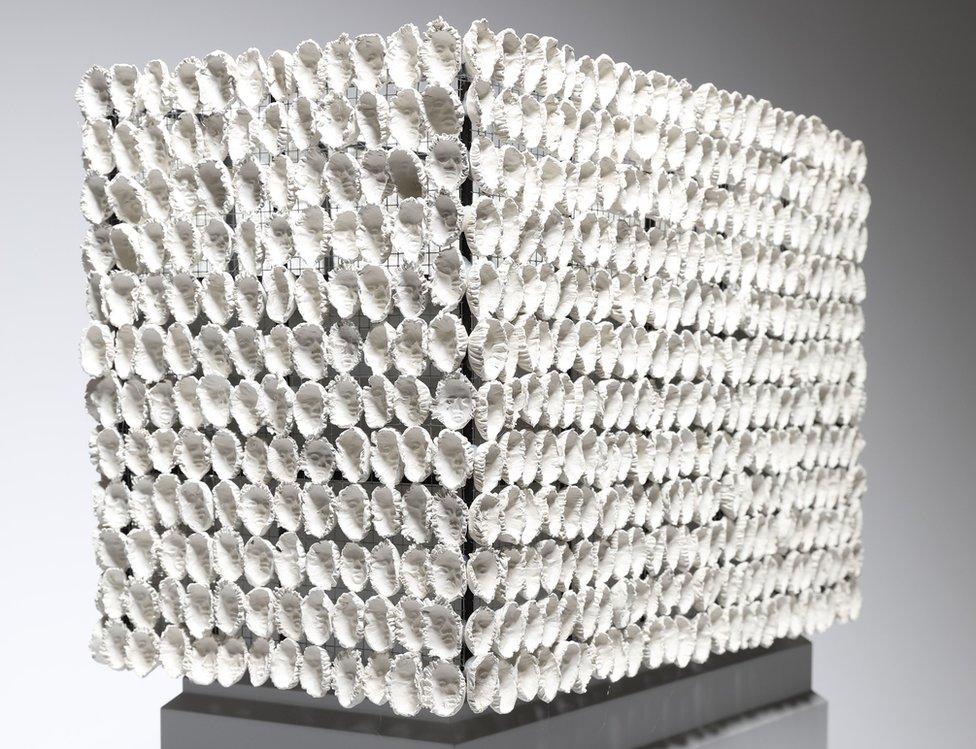
Improntas (Imprint) by Teresa Margolles features casts of the faces of 850 trans people, most of whom are sex workers, arranged round the plinth in the form of a Tzompantli which is a skull rack from Mesoamerican civilisations
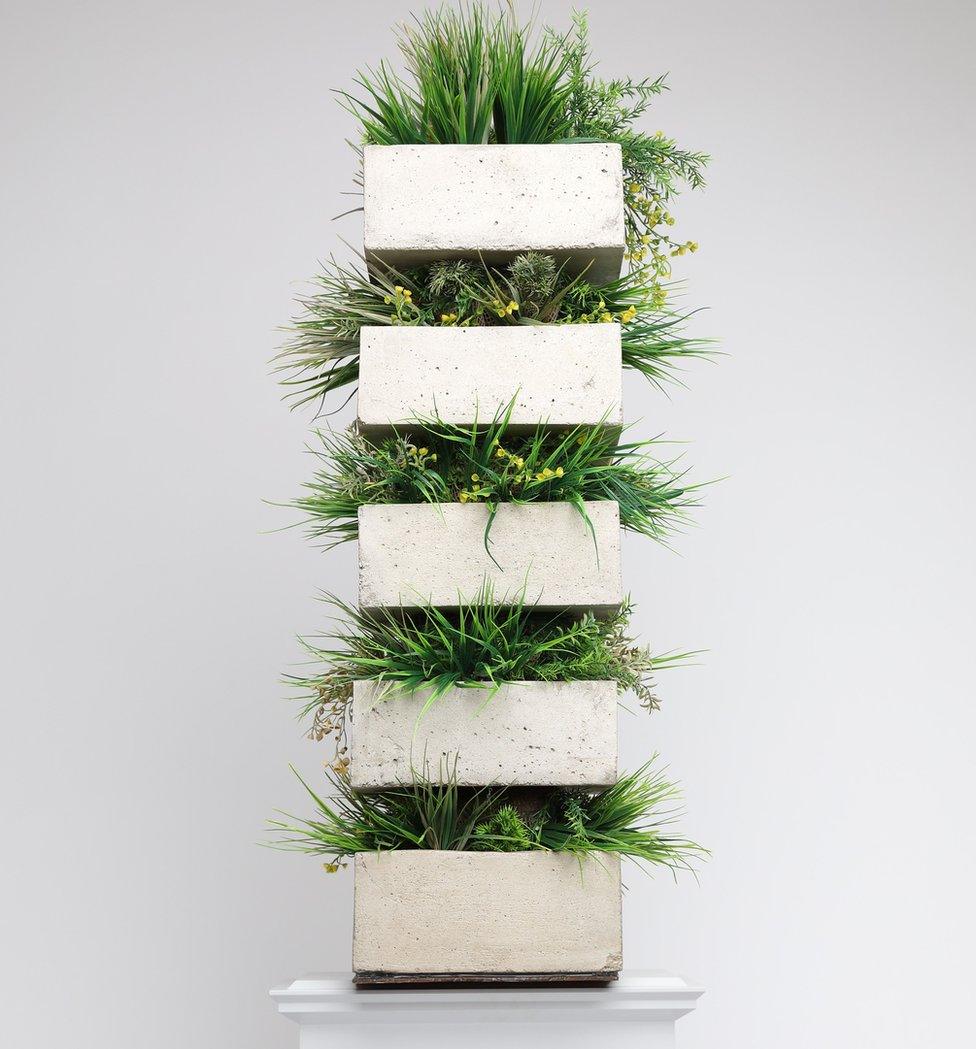
On Hunger and Farming in the Skies of the Past 1957-1966, by Ibrahim Mahama, recreates a grain silo partially built by Eastern European architects in Ghana in the early 1960s in a towering structure filled with living plants
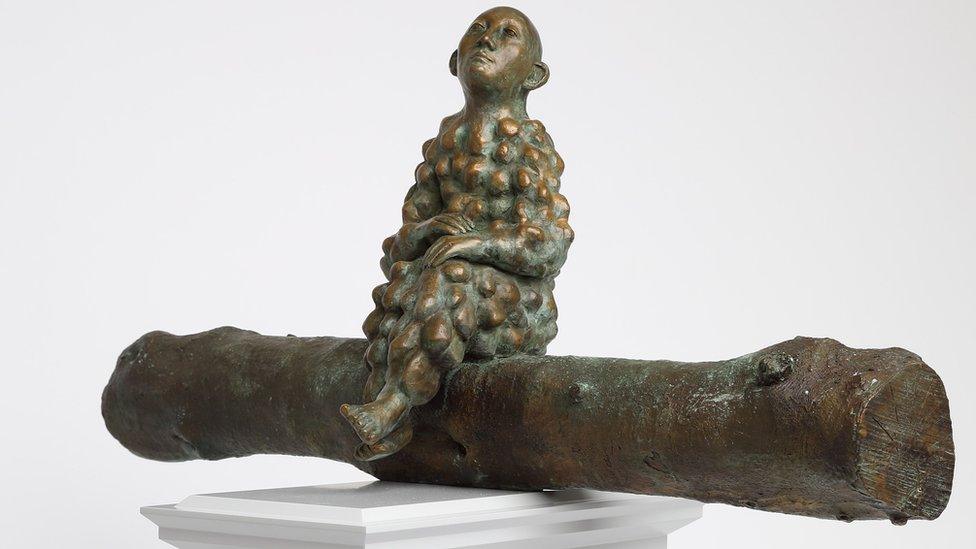
Bumpman for Trafalgar Square by Paloma Varga Weisz which is a figure inspired by the German Wundergestalt tradition and the spirit of German folklore
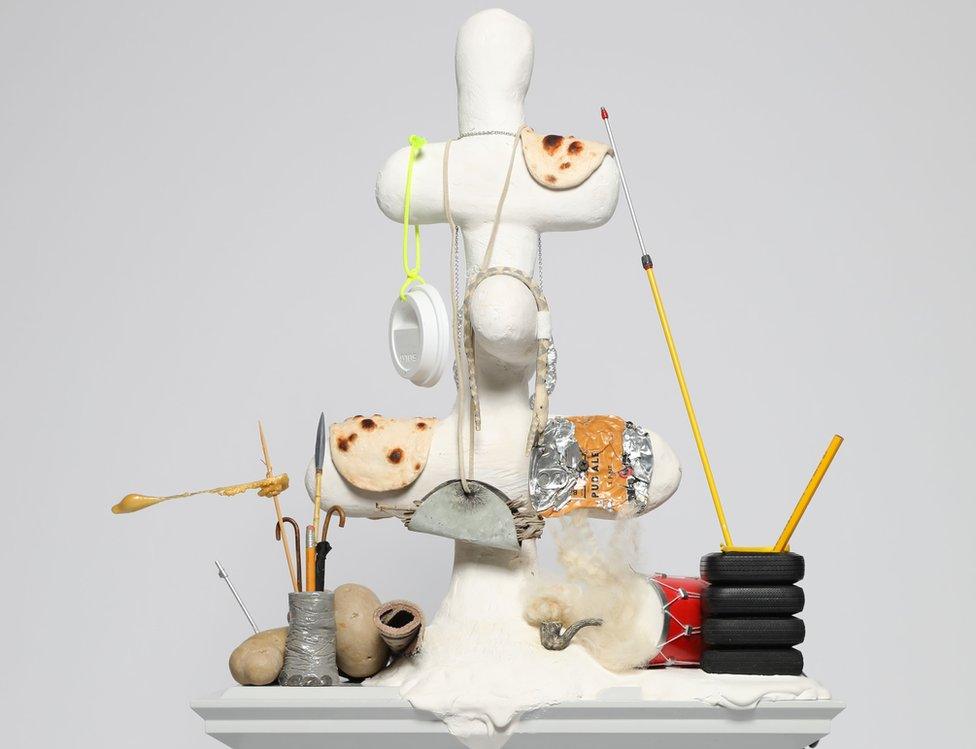
The Jewellery Tree by Nicole Eisenman recreates the household object on a monumental scale, with Lord Nelson's medals, a fife and drum and a plastic coffee lid
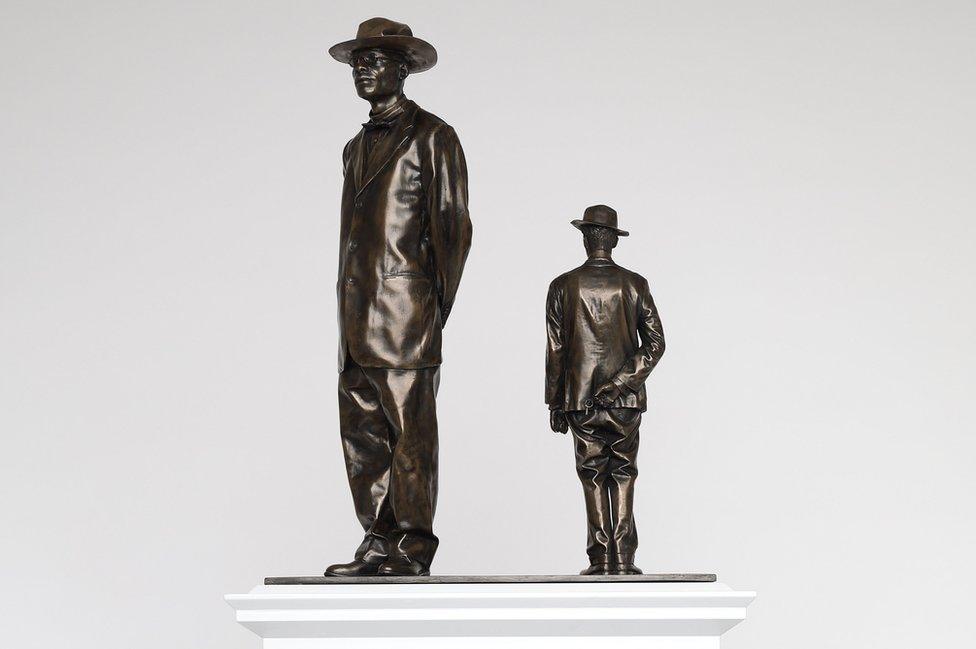
Antelope by Samson Kambalu restages a 1914 photograph of Baptist preacher and pan-Africanist John Chilembwe and European missionary John Chorley. Chilembwe wears a hat in an act of defiance as this was illegal at the time
Justine Simons, deputy mayor for culture and the creative industries, said the Fourth Plinth Programme had become a "powerful symbol for Londoners and visitors to our city and is emulated worldwide".
"It brings great contemporary art to the heart of our city for free and encourages a lively conversation. It casts new light on London's most historic square, helping our public landscape to reflect, represent and celebrate many more of our stories," she added.
Dr Gabriele Finaldi, director of the National Gallery, said: "I think it is important that we find ways to encourage the public to look at and become interested in art, whether it's the great pictures in our museums or new art in public spaces, and I encourage the public to have their say on these inspiring proposals."
The Fourth Plinth was initiated in 1998 by the Royal Society of Art with Mark Wallinger's Ecce Homo.
In 1999, responsibility transferred to the mayor of London.
- Published7 January 2020
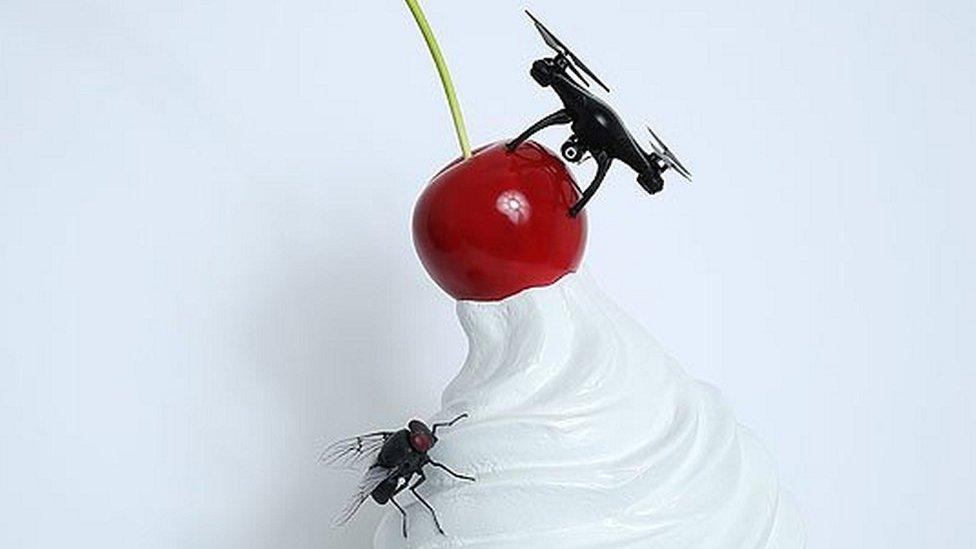
- Published21 March 2017

- Published29 September 2016
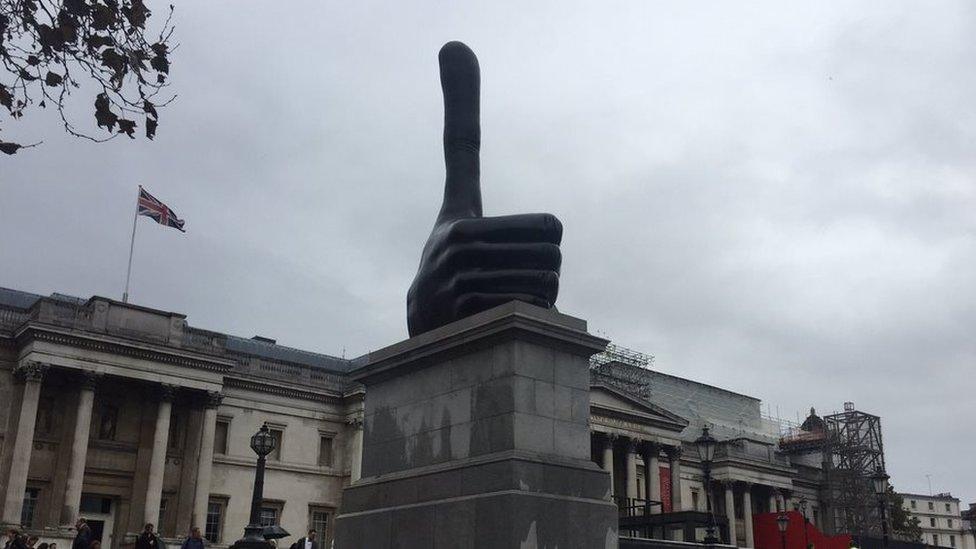
- Published25 July 2013
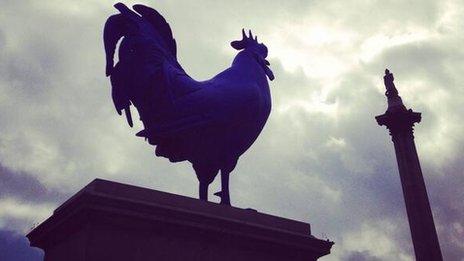
- Published7 February 2014
